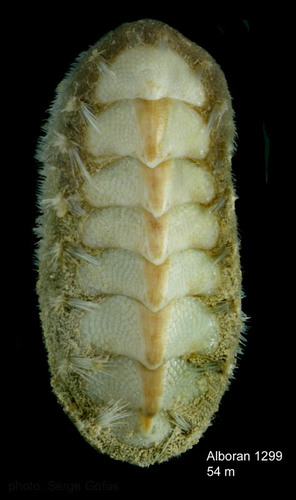Integrated Marine Information System (IMIS)
Persons | Institutes | Publications | Projects | DatasetsAcanthochitona discrepans (Brown, 1827)
Specimen from Isla de Alboran (col. MNHN) (actual size 6.4 mm).
JPG file - 50.87 kB - 474 x 800 pixels
added on 2013-02-142 843 viewsFrom reference Gofas, S.; Moreno, D.; Salas, C. (2011). Moluscos marinos...
Specimen from Isla de Alboran (col. MNHN) (actual size 6.4 mm).
Click here to return to the thumbnails overview
 Comment (1)
Comment (1)
added on 2024-09-12 15:48:26 by 
The identity appears questionable to me, the granularion is much too dense for A. discrepans. I see a density of 100-140 per mm².
Referring to all avaliable images, and in particulat to the study of Katarzyna Voncina et. al. in Biodiversity Data Journal 11:e109554 (2023), only A. fascicularis may have such a high density. That one of discrepans is significantly lower (I have already taken into account the underestimated values for the densitiy and variability in this study). Furthermore, the granules of A. discrepans should be more elongated rather than circular.
This seems therefore to be a juvenile of A. fascicularis.
I would be grateful for a clarifying statement.
R. Kapeller
